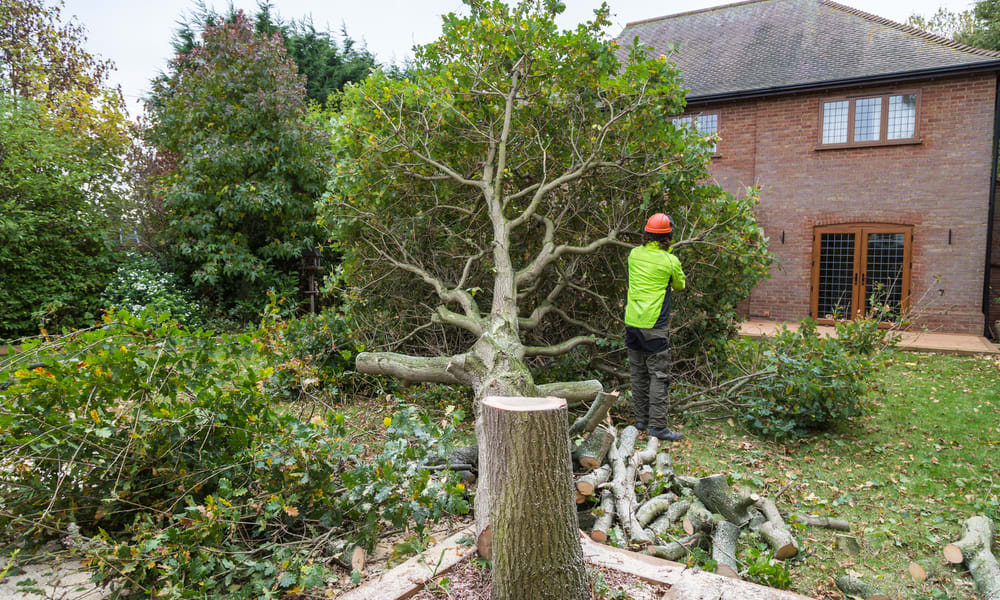Expert Tree Care: Benefits, Services & Costs
Healthy, well-maintained trees boost curb appeal, improve air quality, and protect property — but they need skilled attention. This article explains professional tree services, from pruning and planting to emergency removal and disease control. Learn what arborists do, why routine care matters, and realistic cost ranges to help you budget for safer, more attractive trees.

Expert Tree Care: Benefits, Services & Costs
Trees provide shade, habitat, and visual appeal, but keeping them healthy and safe takes more than occasional attention. Professional tree care combines scientific knowledge and practical experience to protect trees, property, and people. Below is a comprehensive guide to the services arborists offer, why regular maintenance matters, how pruning differs from trimming, the role of arborists in landscape projects, and typical pricing to help you plan.
Core services offered by professional tree companies
Certified arborists and tree-care teams provide a range of services to address common needs and emergencies:
-
Tree removal: Safely taking down trees that are dead, dying, infected, or pose a hazard to structures or pedestrians. Proper removal minimizes damage to surrounding property and prevents further safety risks.
-
Stump grinding: Removing unsightly stumps and the majority of their root mass to prevent shoots from re-emerging and to create a clean planting or lawn area.
-
Tree planting: Choosing species suited to local soil, climate, and space constraints, and planting them with proper techniques to give young trees the best start.
-
Disease and pest management: Identifying signs of decay, fungus, insect infestation, or nutritional deficiencies, then treating trees with targeted strategies to restore and preserve health.
-
Emergency services: Rapid-response crews handle storm damage, fallen trees, and other urgent situations to reduce hazards and begin cleanup quickly.
Arborists blend knowledge of tree biology, soil science, and safe cutting techniques to maintain tree longevity in both urban and suburban environments.
Why routine tree trimming is important
Regular trimming is more than an aesthetic choice — it protects tree health and reduces risk. Key benefits include:
-
Improved tree vigor: Cutting away dead, diseased, or damaged branches prevents further decay and lets the tree direct energy to strong growth.
-
Better appearance: Professional shaping enhances the tree’s natural form and complements landscape design.
-
Enhanced safety: Removing weakened or overhanging limbs lowers the chance of falling branches during storms or high winds.
-
Increased fruit yields: For orchard and backyard fruit trees, well-timed pruning can boost both quantity and quality of harvests.
-
Greater light and air penetration: Thinning dense canopies allows sunlight and air to reach lower branches and understory plants, improving overall ecosystem health.
Trained arborists use specialized equipment and cutting methods to avoid wounds that could weaken the tree over time.
Pruning versus trimming — what’s the difference?
Though commonly used interchangeably, pruning and trimming serve distinct purposes:
Pruning:
- Targets specific branches to improve structural integrity, health, or form.
- Is selective and precise, often removing dead, diseased, or crossing limbs.
- Is used to train young trees or correct structural problems.
Trimming:
- Focuses on shaping and controlling size, often applied to hedges and ornamental trees.
- Is generally broader and less selective than pruning.
- Helps maintain a neat appearance and manage overall canopy dimensions.
Both techniques are important; professionals decide which approach best suits a tree’s age, species, and condition.
How arborists support landscaping projects
Arborists are valuable partners for landscape designers and property owners. Their contributions include:
-
Species selection and placement: Recommending trees that match site exposure, soil type, and design goals to reduce future maintenance and conflicts with utilities or structures.
-
Protecting existing trees during construction: Creating preservation plans, installing root protection zones, and advising on grading and drainage to prevent construction-related damage.
-
Soil testing and amendments: Assessing soil texture, compaction, and nutrient levels, and suggesting improvements to promote healthy root establishment.
-
Long-term maintenance planning: Developing pruning schedules, monitoring for pests and disease, and advising on fertilization or tree support systems.
-
Integrating trees with hardscapes and plantings: Ensuring trees complement walkways, patios, and planting beds while minimizing future interference.
Typical cost ranges for common tree services
| Service | Average Cost Range | Factors Affecting Price |
|---|---|---|
| Tree Trimming | $200 - $760 per tree | Tree height, canopy density, access, number of cuts |
| Tree Removal | $400 - $1,200 per tree | Tree diameter, proximity to structures, removal complexity |
| Stump Grinding | $100 - $400 per stump | Stump diameter, root spread, soil type |
| Tree Planting | $150 - $300 per tree | Tree size, species, soil prep and planting depth |
| Emergency Services | $250 - $4,500+ | Urgency, extent of damage, after-hours response |
Prices are estimates and will vary by region and specific job conditions. Always obtain multiple written quotes from certified arborists before committing to work.
Making the right choice for your trees
Hiring professional tree services is an investment in safety, property value, and the long-term health of your landscape. While DIY pruning or removal might seem less expensive initially, improper cuts, inadequate equipment, or poor disposal can lead to recurring problems and greater cost down the line. Seek out licensed or certified arborists, check references, and request a clear scope of work and warranty on services when available.
Thoughtful, regular tree care enhances curb appeal, reduces hazards, and supports local ecosystems. By partnering with knowledgeable tree-care professionals, property owners can enjoy healthier trees and safer, more attractive landscapes for years to come.






